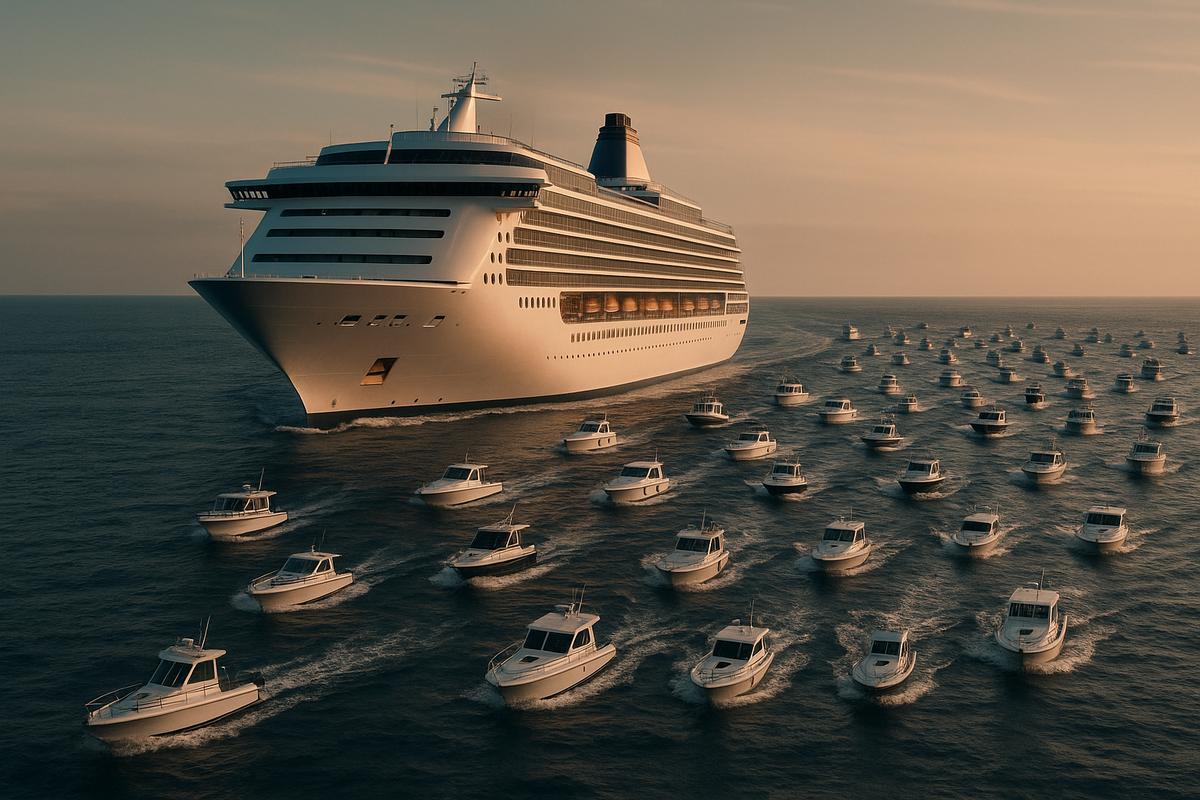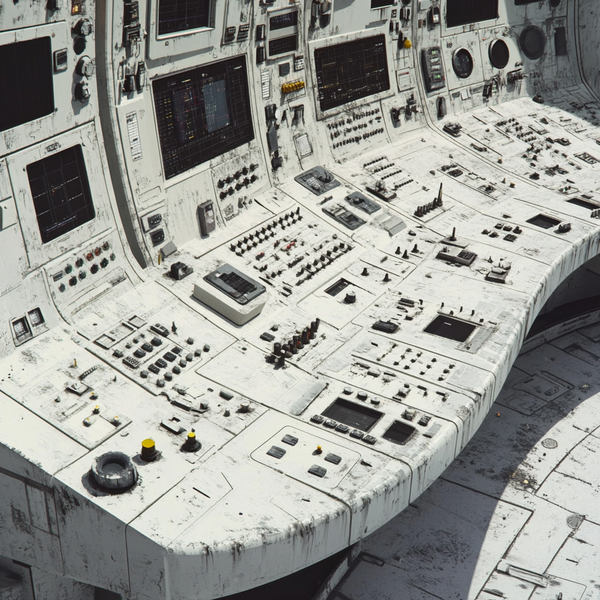A Modern Approach to Engineering
The practices that make companies faster, safer, and engineers more valuable.

Turning a ship is not about sudden acceleration but about steady momentum. The rudder moves, the hull leans, and the course shifts slowly at first, then decisively. Engineering at scale feels the same: hard to start, but once it turns the force is unstoppable.
The reality of building at this scale looks nothing like the project plans of the past. Markets move daily, competitors release constantly, and players expect experiences that are fast, reliable, and trustworthy. Delay is expensive, not only in revenue but in relevance.
The highest-performing organisations such as Google, Meta, Netflix, Amazon, and Microsoft have proven models for how to meet this reality. They release continuously, integrate daily, treat data as a product, and design for resilience. Netflix tests failure in production with Chaos Monkey. Amazon deploys thousands of times a day. Google runs a single trunk-based monorepo that forces integration and consistency across tens of thousands of engineers. Microsoft shifted Azure to trunk-based development to break the drag of long-lived branching. These are not experiments. They are the operating models behind some of the most resilient and profitable companies in the world.
Engineering organisations with decades of history face different challenges from startups. Systems are heavier, habits are more ingrained, and progress can feel slower. They are ships, not speed boats. But when a ship turns, its momentum carries far.
Modern engineering is not about discarding rigour. It is about putting rigour where it matters. Safety and speed are not opposites. They reinforce each other when teams build continuously.
Player and Product Outcomes
Players do not care about planning frameworks. They care about what works in their hands. Amazon’s “working backwards” principle is a reminder that value is only real when players can use it. A working login, a smooth bet, a faster navigation — these matter more than polished plans that never leave the building.
Quality is proven by use. Facebook’s shift from “move fast and break things” to “move fast with stable infra” captured the balance. Speed is essential, but so is trust. Measurement is how you know if you have succeeded. Netflix runs thousands of experiments every year because evidence beats assumption. With feature flags and controlled rollouts, the same discipline is available to any team.
Privacy and trust are engineering outcomes, not compliance afterthoughts. Apple has shown that building for privacy can become a competitive advantage. Discovery is as important as delivery. Spotify’s prototypes and staged rollouts show how testing early reduces wasted effort. The point is clear: product, design, and engineering must work together as one, owning outcomes collectively.
Developer and Technology Outcomes
For engineers, the way of working defines not just what gets delivered but the kind of engineer they become. Google’s trunk-based monorepo shows that integration at scale is not only possible but powerful. Engineers who learn to work this way — integrating continuously, reviewing quickly, keeping main always releasable — gain skills that are valued in every leading engineering organisation.
Microsoft moved Azure to trunk-based development because long-lived branches slowed delivery. The lesson is clear. Shorter feedback loops are safer and more effective. Contribution must be open. Microsoft, PayPal, and GitHub all built cultures where anyone can propose changes across team boundaries. Guarding code and blocking outsiders does not protect. It isolates. Engineers who embrace inner sourcing grow influence and prove themselves against the standards of the best organisations in the world.
Platforms multiply impact. Google’s Borg became Kubernetes because shared infrastructure reduced toil and unlocked focus on product. AI should be treated the same way: not as a threat but as a force multiplier. Reliability must be designed in. Netflix’s Chaos Engineering turned failure into a strength. Monitoring, alerting, and observability are not chores. They are part of the craft. Architecture must evolve with teams, as Spotify has shown. Data must be treated as a product, as LinkedIn does, because reliable data compounds value everywhere else.
Commercial Outcomes
DORA’s research is unambiguous. Elite performers release more often, recover faster, and fail less. They are also more profitable. Speed to market is not just an engineering virtue. It is a commercial one.
Amazon’s two-pizza teams show how independence drives speed. Netflix invests in resilience so failures do not become churn. Google bakes compliance into CI/CD pipelines so that audits accelerate rather than delay. Microsoft reduced waste by enforcing observability and accountability for cloud spend. The commercial case is the same across all of them: flow through systems is flow through the business.
For engineers, this connection matters. The practices that make someone a better engineer — short feedback loops, measurable outcomes, resilient systems — are also the practices that tie directly to business results. Working in large batches and hiding behind process is not protection. It is exposure. The old way will be found out sooner or later.
Organisational Outcomes
Agile should mean intent, not ritual. Atlassian has been open about this. Sprints are tools, not cages. What matters is continuous delivery.
No project is a special case. GitHub scaled by applying the same contribution model across every project. Special cases are usually habits, not necessities. Failure is inevitable. Etsy proved that blameless postmortems turn failure into organisational learning. Fear makes teams brittle. Learning makes them resilient.
Leaders shape culture. Amazon’s leadership principles emphasise removing blockers and focusing on outcomes. Growth is essential. Google offers dual career tracks because engineers should not have to leave the technical path to advance. Distributed work is reality. Automattic shows that async, written-first practices can work at global scale. Spotify shows that aligning teams with system boundaries reduces friction.
Microsoft and GitHub’s SPACE framework reminds us that productivity is not just throughput. Satisfaction, collaboration, and flow matter as much. Sustained performance requires balance.
Final Note and Call to Action
This is not theory. It is the proven way to build software that players trust, businesses rely on, and engineers are proud of. Google shows the power of trunk-based monorepos. Amazon shows the impact of rapid, independent deployment. Netflix shows how resilience grows from testing failure. Microsoft shows the scale of inner sourcing. DORA’s research shows that elite performers are not only faster but safer and more profitable.
For developers, the choice is clear. The practices of modern engineering are not only better for the companies adopting them. They are better for the people doing the work. They make you more valuable, they accelerate your growth, and they prepare you for the expectations of the best organisations in the world. Working the old way will not protect you. It will hold you back.
Modern engineering only works if everyone takes part. It demands discipline, openness, and courage. The reward is faster learning, stronger systems, and better experiences for players. If you are unsure, ask. If you are blocked, raise it. If you see a better way, try it. Do not wait for certainty. Progress comes from action, from small steps, and from learning together.
This is the standard. Not tomorrow. Not next year. Now.




